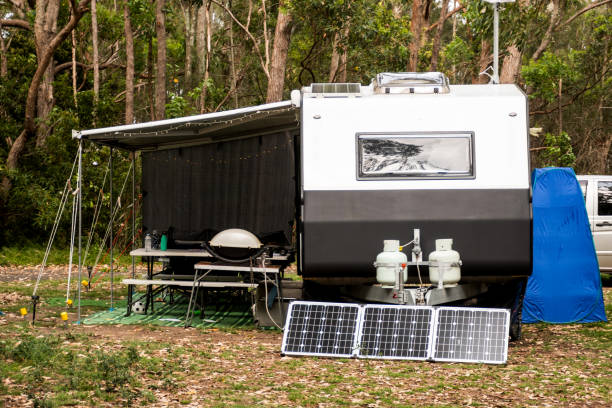
Camping & Vanlife: choosing the ideal energy station
Share
Camping & Vanlife: choosing the ideal energy station
Between autonomy , weight and solar charging , here's how to select the perfect energy station for your getaways, whether in a tent, van or converted van.
Capacity & power
- 500–700 Wh : light weekend (laptop, lighting, occasional 12 V fridge).
- 900–1200 Wh : regular vanlife (TV, 4G box, table-top fridge).
- 1500 Wh+ : long stays, multi-device.
MPPT solar charging
200–400 W foldable panels → recharge in 3–6 hours depending on sunlight. Check input voltage, connectors and MPPT .
Weight, size & noise
Handle, wheels (large models), discreet ventilation. Transport the station in the shade, avoid overheated trunks.
Quick Checklist
- Sufficient Wh + 20-30% margin.
- Pure sine wave inverter (continuous W + peak).
- USB-C PD 100W for laptop.
- MPPT solar input compatible.
- 2-year warranty & LymobileShop support.
See our camping & vanlife selection at LymobileShop.
Typical consumption in camping/vanlife
| Equipment | Power (W) | Time/day | Energy (Wh) |
|---|---|---|---|
| USB-C Laptop | 45–65 | 3–5 h | 135–325 |
| USB-C portable display | 10–15 | 3–5 h | 30–75 |
| Smartphones (2×) | 10 | 2 hours | 20 |
| 4G/5G Router | 8–15 | 8–12 h | 64–180 |
| LED lighting | 5–15 | 4–6 h | 20–90 |
| 12V Mini Fridge | 40–60* | 6–12 h | 100–300 |
| Water pump | 30–60 | 0.2 h | 6–12 |
| Drone/GoPro (charge) | 15–40 | 1–2 hours | 15–80 |
*Duty cycle (on/off): a compressor does not run continuously, the actual energy depends on the ambient temperature and insulation.
Daily scenarios: summer vs. mid-season
Summer profile (high sunshine)
Energy budget ~ 600-900 Wh (laptop, router, LED, 12 V fridge). With 200 W panels → actual production ~150–170 W → 4-5 h of good sun covers 600–800 Wh. A 900–1200 Wh station + MPPT provides comfort and margin.
Mid-season profile
More variable solar production (100–140 W actual on 200 W nominal). Plan for a 1000–1500 Wh station and aim for 200–400 W of panels to absorb weather dips.
Practical optimizations
- Prioritize USB‑C PD (DC→DC) for laptop/display to reduce losses.
- 12V refrigerator with compressor (better efficiency) rather than absorption.
- Panel tilt : readjust every 1-2 hours while bivouacking.
- Shading : Avoid partial shade, especially in series.
- Cable section sufficient to limit voltage drops.
12V Van Wiring: Best Practices
- Use reliable connectors (e.g. Anderson SB , XT60 ) and suitable fuses.
- Secure the station to avoid shocks; ventilate the storage space.
- Car charging: convenient but slow 12V input (100–120W).
Vanlife departure checklist
- Station charged 100%, cables/adapters tested.
- Clean folding panels, MC4 connectors OK.
- Weather Plan B: second source (230 V service area).
